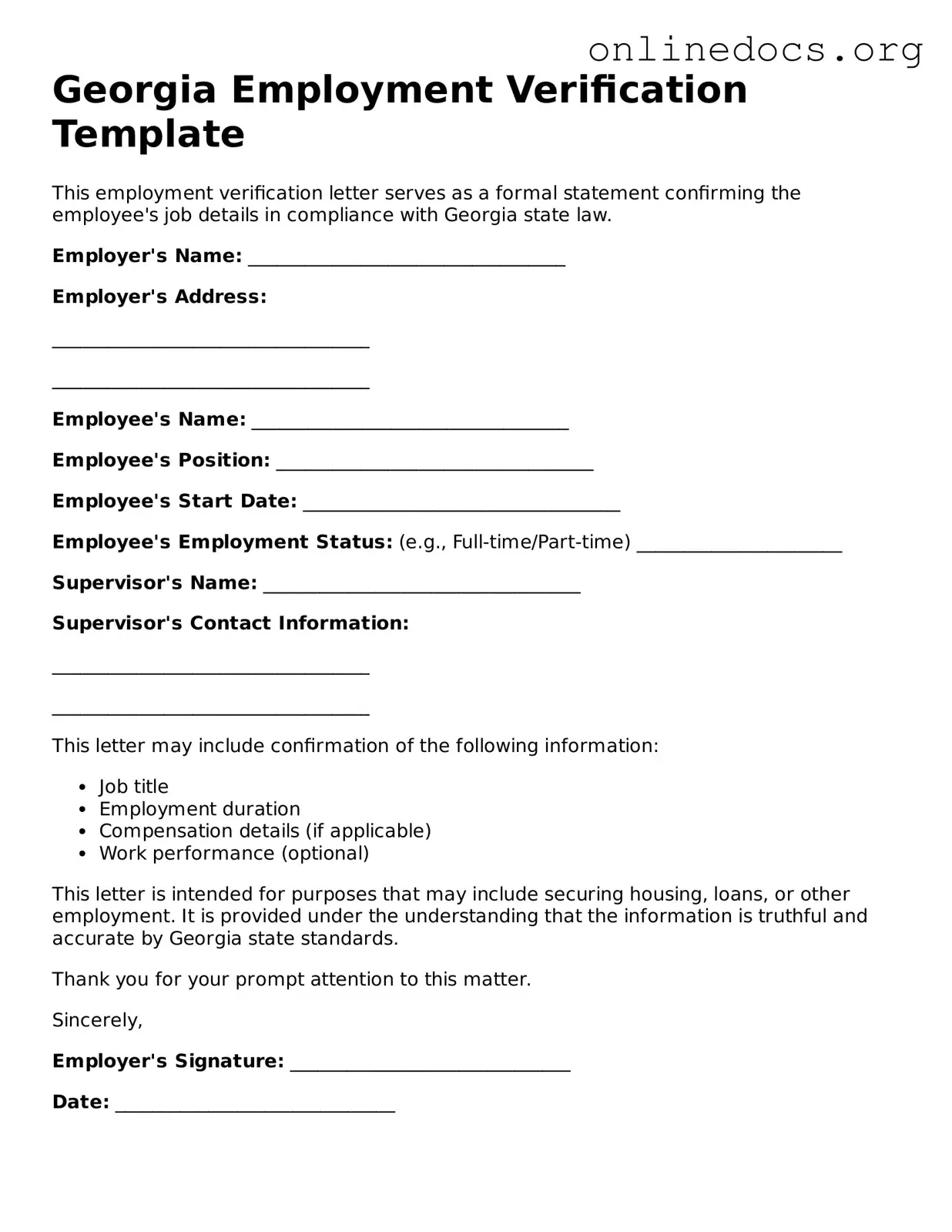The I-9 Form is one of the most commonly used documents for employment verification in the United States. Like the Georgia Employment Verification form, the I-9 requires employers to confirm an employee's identity and eligibility to work in the country. Both forms necessitate the submission of specific identification documents, such as a passport or driver's license, to establish the individual's identity and work authorization. The I-9, however, is a federal requirement, whereas the Georgia form is specific to state regulations.
The W-4 Form is another important document that bears similarities to the Georgia Employment Verification form. While the W-4 focuses on tax withholding for employees, it also requires personal information that can be used to verify employment. Both forms collect essential data about the employee, such as their name and Social Security number. However, the W-4 is primarily concerned with tax implications, whereas the Georgia form centers on employment eligibility.
In the realm of employment documentation, the Employment Verification Letter serves a vital function in confirming an individual’s status, resembling the legal framework established by the Non-disclosure Agreement (NDA). For those interested in understanding the NDA's role in protecting sensitive information shared between parties, you can find more details at californiapdfforms.com/non-disclosure-agreement-form/. Similar to the Employment Verification Letter and other employment-related documents, the NDA creates a structured approach to confidentiality that is essential in various professional contexts.
The Form 1099 is a tax document used to report income for independent contractors. Similar to the Georgia Employment Verification form, it verifies the relationship between the worker and the employer. Both documents serve as proof of employment status but differ in that the 1099 is used for reporting income rather than confirming eligibility to work. This highlights the different contexts in which each form is utilized.
The Social Security Administration's Form SS-5 is an application for a Social Security card. This document is similar to the Georgia Employment Verification form in that it requires personal identification details to confirm a person's identity. Both forms aim to ensure that the individual is who they claim to be. However, the SS-5 is specifically for obtaining a Social Security number, which is essential for tax purposes and employment, while the Georgia form is focused on employment verification.
The State Unemployment Insurance (UI) Claim Form is another document with similarities to the Georgia Employment Verification form. Both forms require individuals to provide personal information and employment history. The UI Claim Form is used to determine eligibility for unemployment benefits, while the Georgia form is used to verify employment status. Each serves a different purpose but shares the common goal of confirming a person's employment situation.
The Employer's Quarterly Federal Tax Return (Form 941) is a document that reports the wages paid to employees and the taxes withheld. While it is not a direct employment verification tool, it contains information about employees that can be cross-referenced with the Georgia Employment Verification form. Both documents involve employee data and serve to confirm employment status, though the Form 941 focuses on tax obligations rather than eligibility to work.
The Employee Handbook often contains sections that outline employment verification processes. Similar to the Georgia Employment Verification form, it provides guidelines on what information is required from employees to confirm their employment status. While the handbook serves a broader purpose of informing employees about company policies, it still touches on the essential aspects of employment verification, including required documentation and procedures.
The Background Check Authorization Form is used by employers to obtain permission from potential employees to conduct background checks. This form shares similarities with the Georgia Employment Verification form in that both require personal information to verify an individual's identity. While the Georgia form focuses on confirming eligibility to work, the background check form assesses the applicant's history, which can influence hiring decisions.
